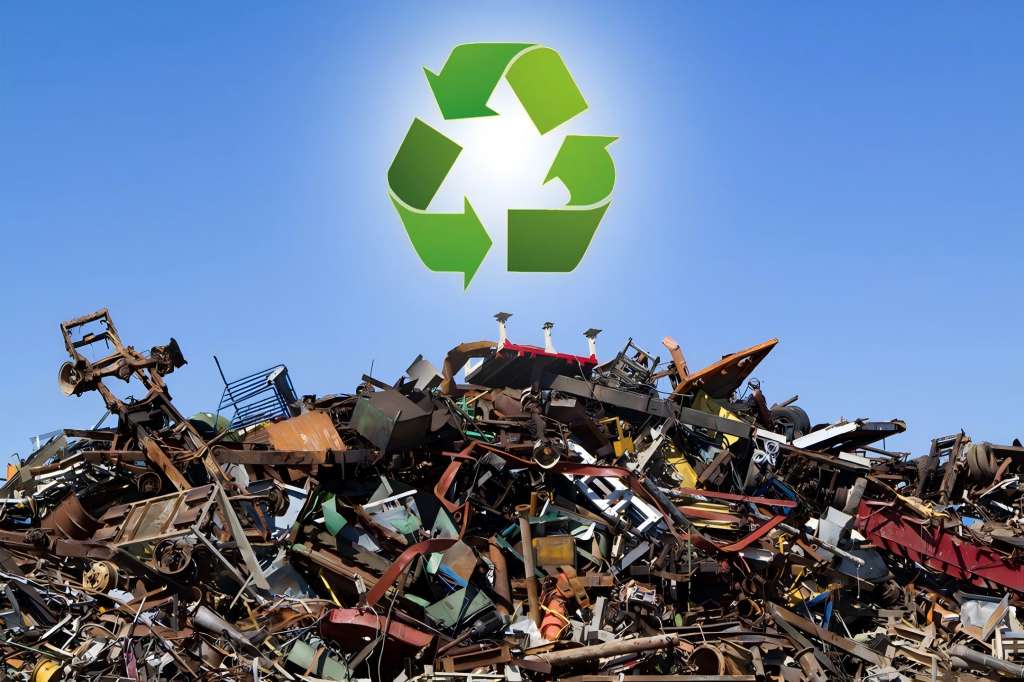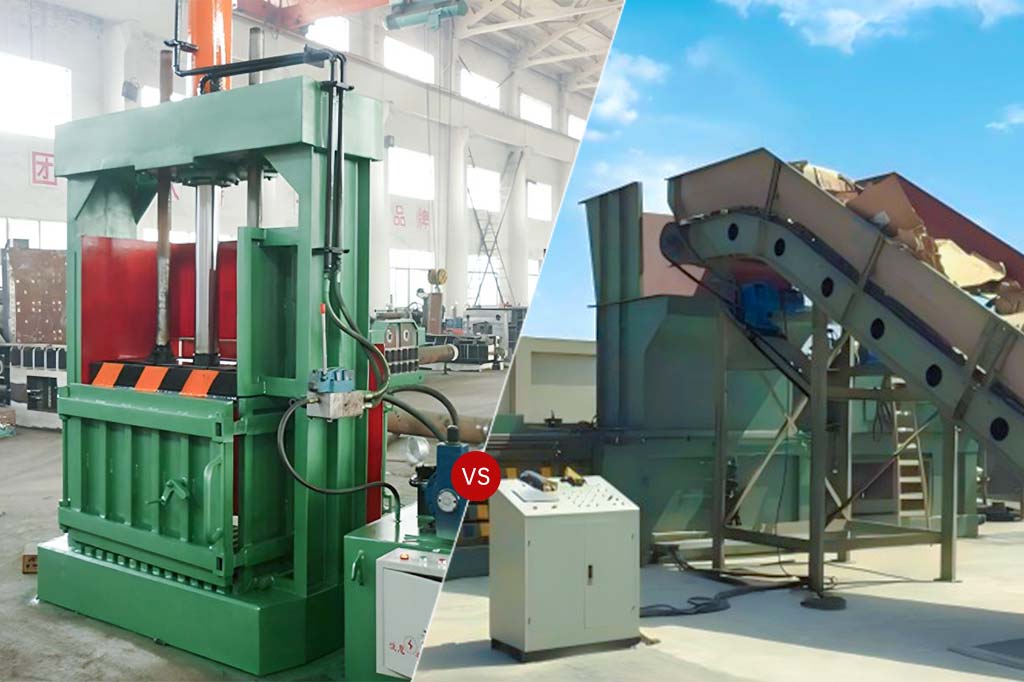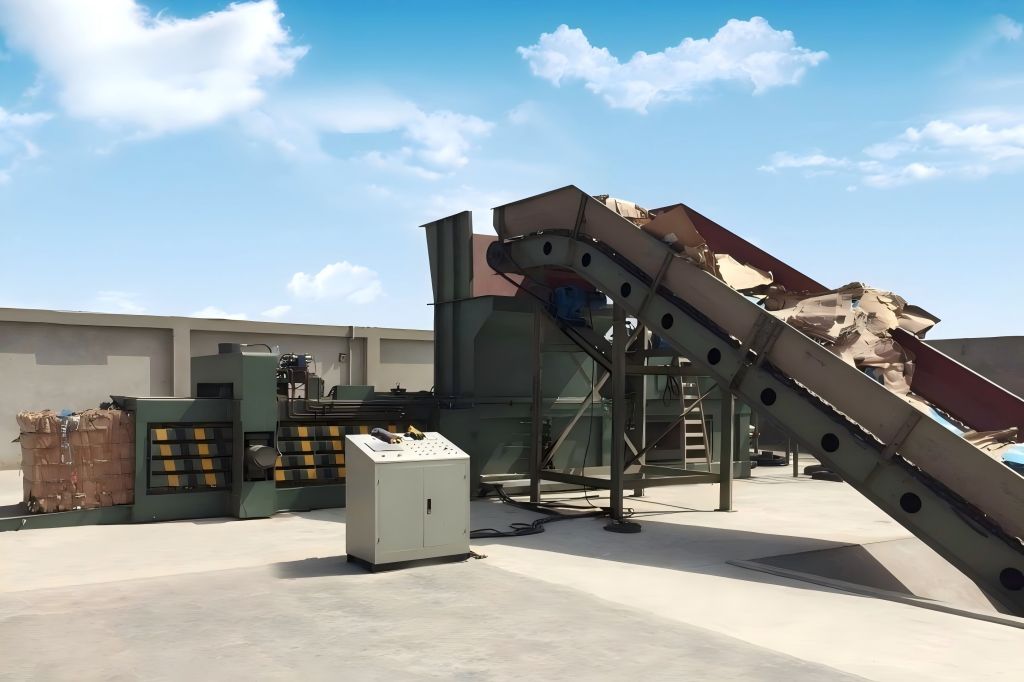As environmental concerns rise, industries are adopting sustainable practices like using scrap metal balers. These machines compress metal waste into compact bales, facilitating easier recycling and transport. While crucial for reducing industrial waste, the environmental impact of balers on soil, water, and air quality requires further examination.
This article delves into the environmental impact of scrap metal balers, focusing on the positive and negative effects they have on the environment, with a special emphasis on soil contamination, resource conservation, and waste management.
The Function of Balers for Scrap Metal in Recycling
Scrap metal balers are critical in the metal recycling process as they reduce the volume of metal waste by compressing it into smaller, manageable sizes. This compressed material can then be more efficiently transported and processed at recycling facilities, reducing the need for new raw materials.
An important part of protecting the environment and minimizing the impact of metal production is the work done by the recycling industry. In 2023, metal recycling saved approximately 700 million tons of CO₂ emissions globally, which is equivalent to removing 150 million cars off the road for a year.
Positive Environmental Impact of Scrap Metal Balers
1. Reduction in Soil Contamination
One of the major concerns surrounding metal waste is soil contamination. Metals, particularly heavy metals like lead, cadmium, and mercury, can leach into the soil from improperly discarded metal waste, contaminating it and affecting local ecosystems. These metals can make their way into water supplies and even into the food chain.
Scrap metal balers play a crucial role in mitigating this risk by ensuring that metal waste is properly managed and sent for recycling rather than being dumped in landfills where it could contaminate soil. Recycling reduces the volume of metal waste that ends up in landfills. In the U.S., it is estimated that recycling steel alone prevents 12 million tons of metal from ending up in landfills annually, reducing the potential for soil and groundwater contamination.
2. Lower Carbon Footprint and Energy Savings
Baling and recycling scrap metal have a direct impact on energy consumption and greenhouse gas emissions. Compared to mining and refining new metal from raw materials, recycling metal uses a lot less energy. For instance, up to 95% less energy is required to create aluminum from bauxite ore when it is recycled. Similarly, recycling steel saves approximately 60-74% of the energy required for production from raw iron ore.
This major cut in energy consumption results in a lowered output of greenhouse gas emissions. Producing new steel from recycled materials reduces CO₂ emissions by 58%, while aluminum recycling cuts emissions by 92%. By facilitating the recycling process, scrap metal balers enable industries to drastically reduce their carbon footprint.
3. Reduction in Landfill Usage
Methane emissions, groundwater pollution, and soil contamination are all caused by landfills, which are a significant cause of environmental degradation. The unrecycled metals wind up in landfills, where they clog up space and cause long-term environmental problems.
Scrap metal balers help prevent this by compacting and bundling scrap metal for recycling. This process considerably lowers the quantity of waste that must be transported and processed. According to the U.S. Environmental Protection Agency (EPA), recycling one ton of steel saves 4 cubic yards of landfill space, which not only reduces landfill size but also minimizes the environmental impact of landfill leachates (the liquid that leaks out of landfills, potentially contaminating soil and water sources).
While the positive environmental effects are clear, it is also essential to consider some of the challenges that come with the use of scrap metal balers, especially in terms of maintenance, energy consumption, and the potential for leaks.
Negative Environmental Impact of Scrap Metal Balers
Despite the numerous benefits, scrap metal balers are not without their environmental challenges. Minimizing their detrimental effects on the environment requires the management of multiple aspects.
1. Hydraulic Fluid Leaks and Soil Contamination
Scrap metal balers, especially hydraulic balers, use significant amounts of hydraulic fluid to operate. If this fluid leaks, it can cause significant soil contamination, particularly if the fluid contains harmful chemicals. These leaks can occur during maintenance or due to equipment malfunction, leading to localized contamination of the soil and water bodies.
Impact: A typical hydraulic baler uses between 20 to 50 liters of hydraulic oil, and even small leaks can spread contamination over several square meters of soil. Hydraulic oil can contain toxic chemicals that, if left untreated, can damage local ecosystems and contaminate drinking water supplies. It is actually possible for one liter of hydraulic oil to contaminate up to one million liters of water.
Mitigation: To reduce the environmental impact of hydraulic leaks, modern balers are increasingly being designed to use biodegradable hydraulic fluids, which break down more easily in the environment, minimizing long-term contamination. Regular maintenance and monitoring of baler equipment are also critical to preventing leaks.
2. Energy Consumption
While scrap metal balers contribute to significant energy savings in the overall recycling process, the balers themselves consume electricity, which can impact the environment depending on the energy source. For example, if a baler operates using electricity generated from fossil fuels, its carbon footprint increases.
Energy Use: A standard hydraulic baler consumes between 10 to 30 kWh of electricity per ton of metal processed. In large facilities, this energy use can add up, particularly if the balers operate continuously. This energy consumption’s effect on the environment is contingent upon the local power grid’s carbon intensity.
Mitigation: Many recycling plants are switching to renewable energy sources, including solar or wind power, to run their operations in order to decrease the environmental impact. Energy usage is also being decreased by energy-efficient balers that have power-saving features such as automated shut-off systems when not in use.
3. Water Pollution from Metal Processing
Once scrap metal has been compacted and transported to recycling facilities, it undergoes further processing, including shredding and melting. During these processes, metal fines and particulates can be released into nearby water sources if not properly contained. This can lead to water contamination and soil degradation around recycling facilities.
Impact: Water used in metal recycling can become contaminated with heavy metals and chemicals, which can seep into the ground and affect soil health. Though this contamination is mainly related to recycling facilities, proper baling minimizes material loss during transport, reducing the risk of loose metal particles contributing to soil and water pollution before reaching these plants.
Mitigation: Using closed-loop water systems in recycling plants and properly managing runoff can mitigate the impact of water pollution. Additionally, ensuring that baled scrap metal is securely packaged and transported minimizes the risk of loose metal particles contaminating soil and water sources.




